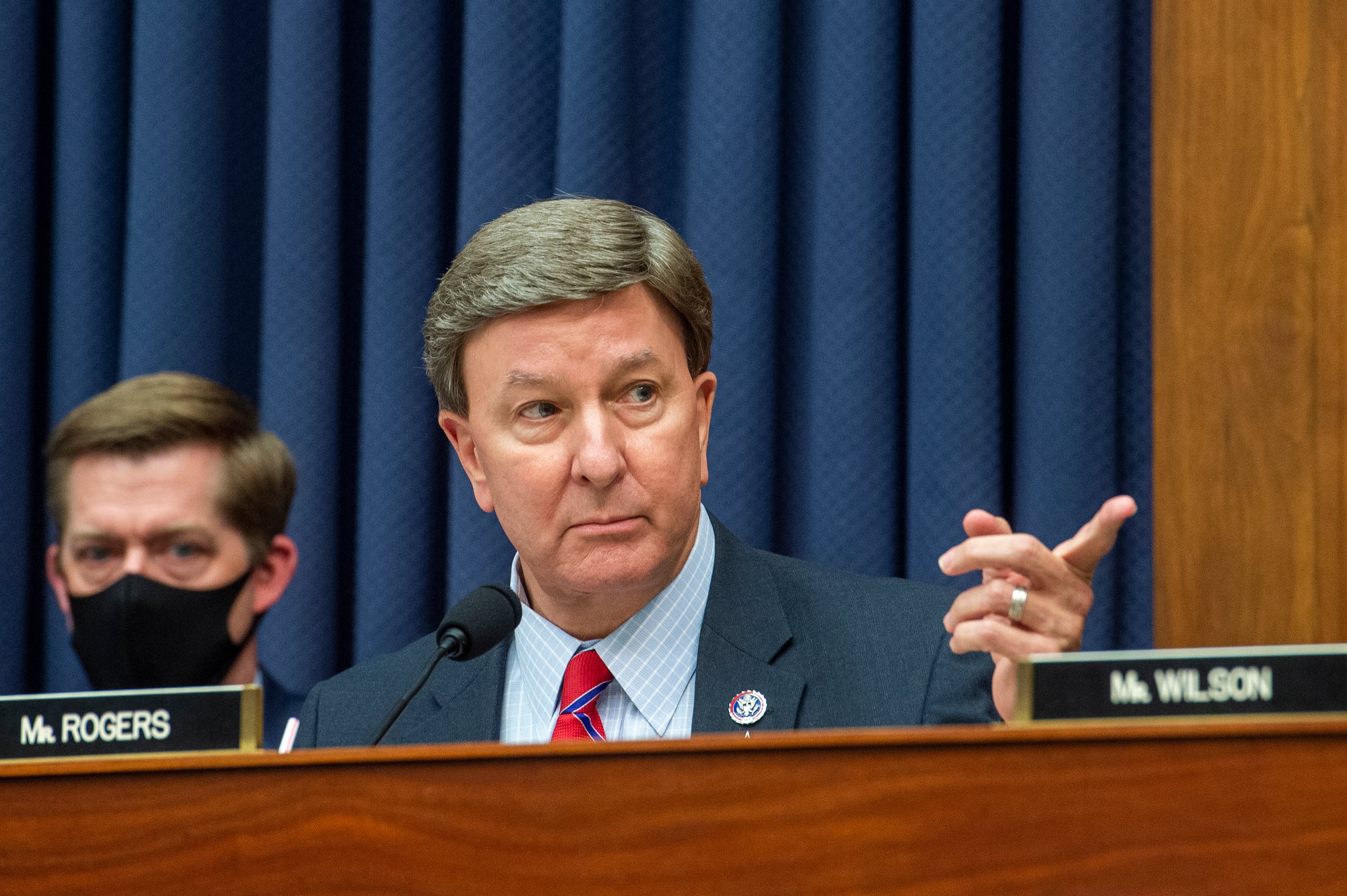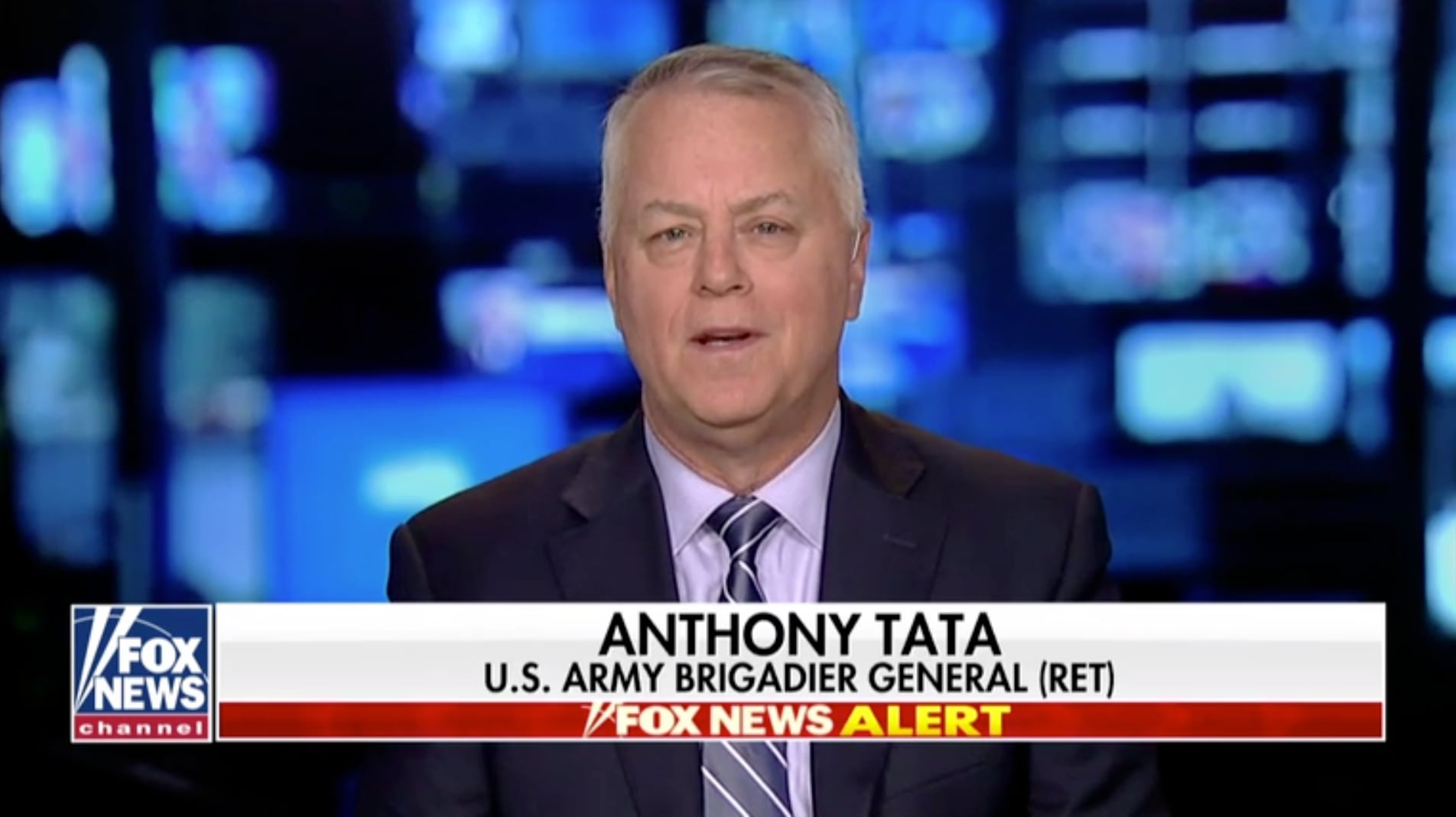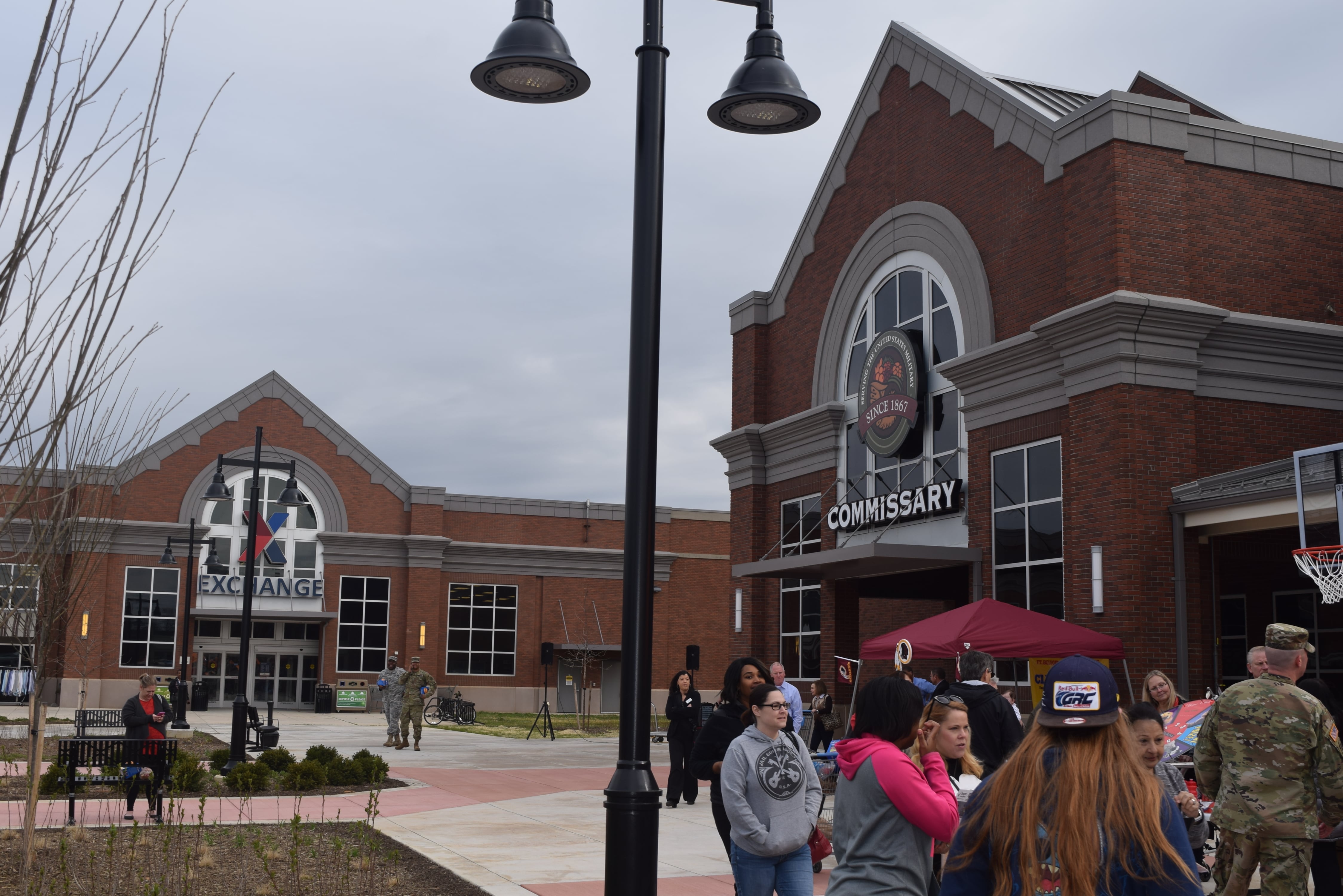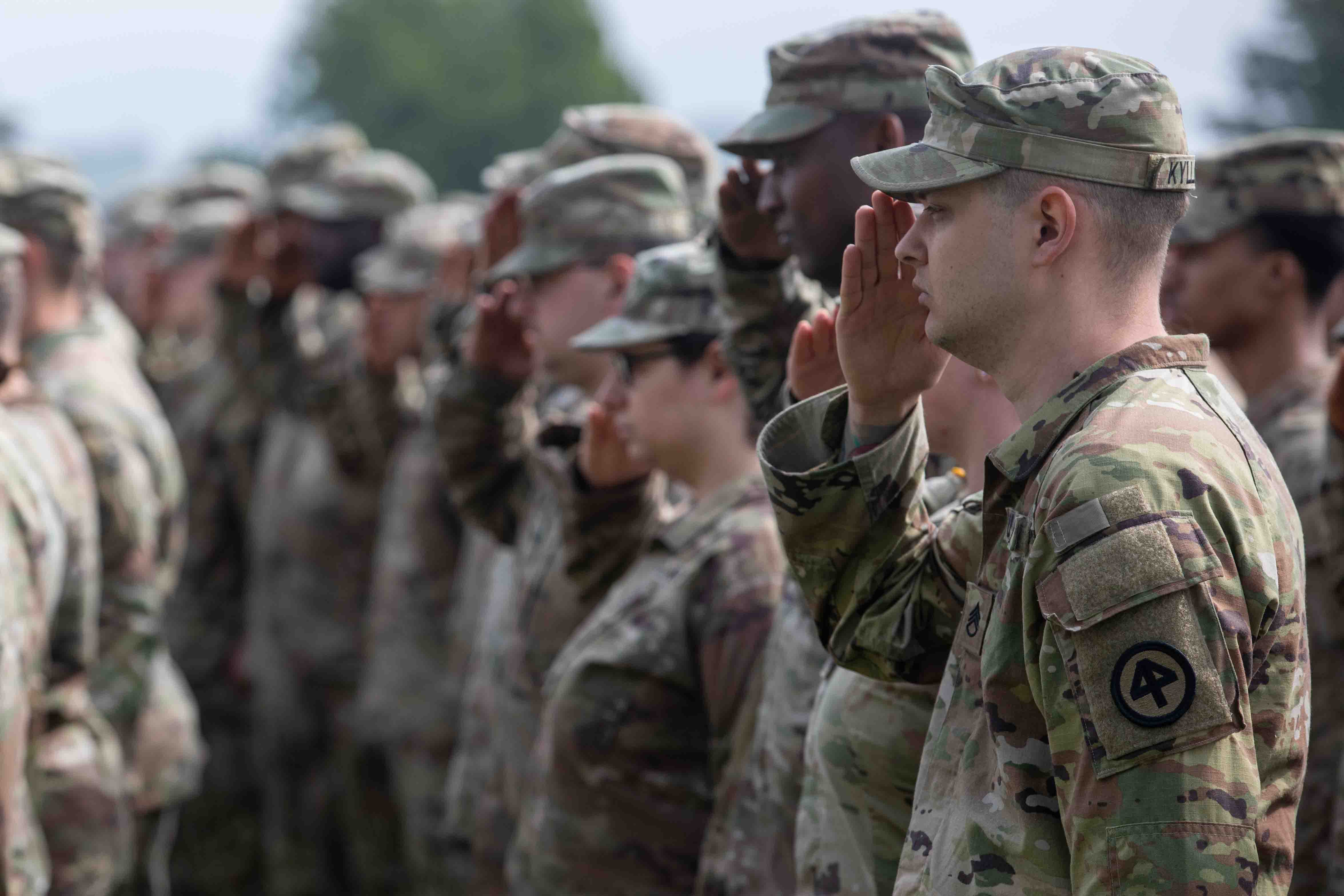As many as The Navy will hand out 23,664 sailors will earn new petty officer crows in the days before Thanksgiving. across the Navy’s total force in time for sailors to express their gratitude on Thanksgiving for either making petty officer or moving up a notch in the ranks.
Overall opportunity dipped for the 101,538 test-takers this fall in the active and reserve full-time support ranks. Of them, 23.3 percent will be advanced up the petty officer ranks, according to new quotas released Thursday. That's down from a 24.7 percent shot in the spring.
In August and September,101,538 across the force — active and Reserve —sat for exams to compete during the fall advancement cycle.
Of those, 97,440 or 95.60 percent passed, becoming eligible to compete for 23,665 quotas across the three Navy components — a a 23.31 chance at moving up, down slightly from the 24.74 percent chance on the spring cycle. It's the second cycle that saw an overall slight decline in the opportunity.
It's the second cycle in a row that the overall, force-wide advancement rate dropped, but it's a far cryfry from the wild swings only a handful of cycles ago that left many ratings in the lurch.
Advancement quotas:
- SELRES Cycle 97 2015 E4-E6 Advancement Quotas
- FTS Cycle 228 2015 E4-E6 Advancement Quotas
- Active Duty Cycle 228 2015 E4-E6 Advancement Quotas
This year, there's a new wrinkle in the system. Sailors advanced this summer via the new Meritorious Advancement Program have been tallied and subtracted from each exam rating's quotas. The push by Chief of Naval Personnel Vice Adm. Bill Moran gives skippers more authority to spot advance sailors, but leaves fewer also reduces thequotas for test-takers., leaving fewer quotas for test-takers as part of the Ch But gone are the wide swings in advancement of just a few years ago as the Navy was drawing down it’s force — something Chief of Naval Personnel, Vice Adm. Bill Moran set his sights on when entered the job just over two years ago stating that sailors need levels of advancement that can be counted on.
But this year, there's a new wrinkly in the system as for the first time, spot advancement numbers from this year's Meritorious Advancement Program season were factored in, leaving fewer quotas overall for those taking the test.
This only impacted those in the active and reserve full-time support communities as the 2,304 active duty and 67 FTS MAP advancements came right off the top of quotas pile and are factored in on calculating the overall opportunity this cycle for the first time, ever.
"Total advancement opportunity, which is the MAP advancements plus the Navy-wide advancement exam, remains very strong," said Capt. Will Kronzer, head of enlisted force plans, policies and oversight for CNP the chief of naval personnel.
"Yes, the overall active opportunity did have a slight decrease this cycle, but they are still very close to the historical average and are still very solid so I think this speaks to the health of the force that advancement has been relatively stable over the past few cycles."
The reason for the drop is again high retention across the active-duty forceNavy.
"We continue to have had very solid retention and with that high retention comes increased competitiveness for advancement," Kronzer said. "But it’s very positive for sailors that even with those challenges, we’ve also been able to maintain solid and stable opportunity for advancement."
Another spot of good news: Only 4 percent of sailors failed their tests, down nearly a percentage point from last year. On the down note. This also means that 4098 sailors, or 4.04 percent, failed their tests. However the good news is that this percentage is down nearly a percentage point from last year’s over 4.8 percent failure rate.
For the second cycle in a row — number 228 for active and FTS, and 097 in the Reserve — officials again engineered a simultaneous release of active-duty, Full-Time Support and selected reserve quotas.
They also plan again for a simultaneous release of the names by Nov. 25., to commands to notify sailors and the general public release will happen Nov. 24th and 25th Respectively.
Spot promotions
Just two years ago, personnel officials were planning to scrap cut off the then Command Advancement Program; they felt no-test advancements were complicating their efforts to stabilize ratings. as it was felt these spot advancements were working against the community managers as they tried to stabilize ratings.
It wasn’t that commanding officers were advancing the wrong people — it’s that there were problems accounting for whom they spot advanced, which contributed to clogged ratings. ust that the accounting for those spot advancements wasn’t always good enough for manpower planners to to take them into account when setting advancement quotas.
But That’s changing now with the shift to the new Meritorious Advancement Program, which mandated a three-month MAP window this summer when skippers must use their quotas. These were tracked and then factored into fall advancement quotas. Skippers also could return unused quotas or ask for more. , Quota usage is now tracked so quotas now tracked and from now on, they’ll be accounted for on the fall advancement cycle every year.
Across all three paygrades, CO’s advanced a total of 2,278 sailors meritoriously. Overall, this accounted for about 11.2 percent of all active-duty advancements this cycle.
"The heart of the matter is we want to give the CO’s the ability to advance the best of the best themselves," Kronzer said. "It’s a big culture shift out there and I think it’s been very successful this first year."
But, Kronzer said, the shift MAP from CAP didn’t come without some difficulty as well.
At the E-6 level, 957 were advanced to this paygrade meritoriously, accounting for nearly which accounted for 24.7 percent — nearly a quarter of all E-68 advancements. The mismatch is that Advancement to E-5 and E-4 were much less.
Kronzer said this was being adjusted to ensure that COs advance more sailors to E-4 and E-5. There were 793 E-3 to E-5 advancements, accounting for 10.4 percent of all advancements at this level while the 554 E-3 to E-4 accounted for just 6.1 percent of sailors moving into the petty officer ranks for the first time.
This is being fixed, Kronzer said as the goal is spread the advancements between the pay grades in a way reflects their relative size in the force.
"When we shifted in the middle of the fiscal year from the old CAP program, we continued to use the same algorithm which allotted more E-6 quotas — we have already changed the policy and the algorithm for to target the more junior pay grades more as we move into fiscal year ’16."
That won’t be the only change in the MAP program next year, Kronzer said. MAP quotas will rise as the program extends across the entire force. , as the plan is to gradually increase MAP advancements across the entire Navy.
"We have "Our decision for FY-16 is to slowly increase the number of quotas and we are also distributinge some additional quotas to shore commands," he said. "However, we will move forward very slowly moving forward with these increases to determine their impact on the force as well as advancements."
Overall, he said, they're making the take-aways from this MAP season show that they’re making some headway in changing fleet culture to spot advance the best, rather than those edging near their high-year tenure cap. from using spot advancements to away from the "CAP" mentality into a new dynamic where command spot advancements are used exclusively to advance only the top sailors.
"We we haven’t seen the results we’d like to see, but at the same time, we have seen some progress," he said. "We did see some sailors at being advanced through MAP who were at high-year tenure — perhaps they were the best of the best sailors, but there may be some of the old CAP attitude still out in the fleet of protecting a sailor by using a MAP to save them from high-year tenure. It will be some time before we shift mindset totally in an organization of this size."
Active Duty
Overall, active component sailors saw a slight decrease in advancement opportunity this cycle. A total of 87,545 across all three pay grades sat for the exam, with 86,073 passing. with 20,582 competing for a quota, 23.91 percent of eligible sailors will advance. That's down from 25.26 in the spring and a 27.6 chance to advance last fall
The 1,472 failures accounted for an overall 1.68 percent failure rate.
At E-6, opportunity dropped to 15.94 percent, down from the 17.69 percent chance this past spring — and 19.3 percent last fall. The one cycle decline is 1.75 percentage points, but over the past year, it's dropped 3.36 percentage points.
This cycle, 24,997 sailors took their exams with 22,257 passing and competing for the 3,938 quotas. Failing were 730 sailors, amounting to a 2.92 failure rate.
At E-5, the drop was nearly two percentage points to 21.91 percent down from 23.87 percent this past spring and 25.1 percent a year ago.
A total of 35,379 sailors sat for the exam, and 34,715 passed and are competing for one of 7,607 quotas.
Meanwhile, those seeking entry into the petty officer ranks had a 32.94 percent shot at a petty officers crow. That's down slightly from the 33.30 shot last cycle. Of the 27,172 E-3s who sat for the E-4 exam — of which 27091 passed and became eligible for one of the 9,107 new active crows this year. Just eighty one sailors failed their E-4 exams, a failure rate of .3 percent.
Full-Time Support
The bad news for FTS sailors shot at advancing took a slight hit this time, after last cycle's slight increase for sailors in the reserve full-time support ranks.
The good news is it wasn't much of fall, just .33 of a percentage point as 2,217 sailors took exams and 2,126 passed. With 603 quotas between the three pay grades, opportunity came out to 28.36 percent, down from Spring's 28.69 overall chance.
Overall, 91 sailors failed exams in the FTS ranks, but 84 of those came at E-6 where 7.23 percent of those testing blew the test. Only seven taking the E-5 exam failed to pass and no E-3's failed their E-4 exam. This means that overall FTS failures were 4.10 percent.
Chances of putting on E-6 dropped 3.53 percentage points to 15.40 percent from last cycles 18.93 percent shot. Still opportunity is still above the 12 percent chance seen last fall.
At this level, there are 1,162 test takers, of which the 1,078 passers are competing for 166 quotas.
At E-5, 694 took the exam and 687 passed. They are competing for 238 quotas to move up, resulting in a nearly two percentage point increase from 32.87 to 34.64 percent. Not bad considering last cycle's 8.87 percent increase from last falls 26 percent shot.
And again this cycle, over half of the 316 E-3's who took and passed their tests will get one of the 199 quotas to move up, that's a 55.12 shot at moving up, up from 46.92 percent chance at moving up last cycle. And that, too was a 7.65 percent increase over the 39.27 percent shot seen last fall.
Selected Reserve
The irony of the Navy's drilling reservists is that they saw across the board increases again in advancements with an even higher rise in sailors failing their tests.
Selected reservists overall chance to advance jumped from 20.09 last cycle to 26.83 percent with all three pay grades are seeing a jump in opportunity.
Advancement for these part-time sailors rising for the fourth consecutive cycle after a few years of force structure cuts that overmanned the Reserve force and saw advancement plummet for a couple years.
In August, 11776 reservists sat for their exams and 9,241 — of them passed, making them eligible to compete for one of the 2,479 quotas at E-4 through E-6.
On the down side, more reserve sailors failed their exams this cycle than advanced in rank. Across all three paygrades, 2,535 failed tests brought with it a 21.53 percent failure rate. And that is a significant increase from last cycles 2,008 failures and a 15.13 percent failure rate.
By comparison, active duty failures dropped this cycle to 1.68 percent, down from 3.17 percent last cycle. In the full-time support ranks, failures dropped as well to 4.10 percent, down from the Spring's failure rate of 6.19 percent.
At E-6, 5,922 sailors took their exams and 3,924 passed. They are competing for 510 quotas to advance. The good news is that advancements at this level rose again to 13 percent, up from the Spring's 9.74 percent shot which was 3.54 percent better than last fall's 6.2 percent.
The bad news, is again this cycle, Reserve E-6 test takers failed their exams at the highest rate in the service. And it's on the rise as failures rose by 439 from 1,559 to 1,998 this cycle — an increase of over 10 percentage points from 23.52 percent to 33.74 percent failure rate.
This cycle, E-5 opportunity rose to 26.40 percent from last cycle's 21.95 percent shot with 3,932 test takers of which 3,424 passed and are competing for on of 508 quotas to move up.
The chance to put on petty officer in the selected Reserve again made a significant jump of nearly 14 percentage points to a 56.26 shot at moving up with 1,922 taking exams and 1893 passing and competeing for 1,065 third class crows.
It's the second consecutive and significant jump in opportunity at this paygrade, as last cycle's 42.30 shot was itself an 8.85 percentage point jump from from 33.45 percent chance to move up last fall.
[more to come]
Mark D. Faram is a former reporter for Navy Times. He was a senior writer covering personnel, cultural and historical issues. A nine-year active duty Navy veteran, Faram served from 1978 to 1987 as a Navy Diver and photographer.





